Bare Metal Recovery
With CloudBerry Backup you can create a recovery USB drive or ISO image file for an emergency "bare metal" recovery in case of a system or hardware crash.
Configuring BIOS Settings
When booting from a recovery disk, you might need to customize some of the BIOS settings to make sure that the recovery disk configuration matches that of both the current PC and source PC on which the recovery disk was created, so that the recovery disk is able to load its operating system.
For example, you might not be able to restore a disk image unless the SATA configuration of the current PC matches that of a computer on which the recovery disk was created.
Recovery from System Recovery Media
- Insert bootable USB Drive or mount ISO image to adjust settings and start the Online Backup Service.
- Create and run the restore plan
- [Restart the target computer once a restore will be completed
- (Optional). Use Management Tools to save logs, execute commands in Command Prompt, or modify a Registry
Run Bootable USB Drive or ISO Image File
- Insert the bootable USB drive or mount the ISO image as a drive into the target computer and restart it.
- You will see a welcome screen of the "Boot Menu" where you will be prompted to enter the Master Password that you specified when creating the bootable device (if you did not specify any password, this step will be skipped).

(Optional) Provide the network configuration in case of the target computer is on a local network:
- Click on Settings
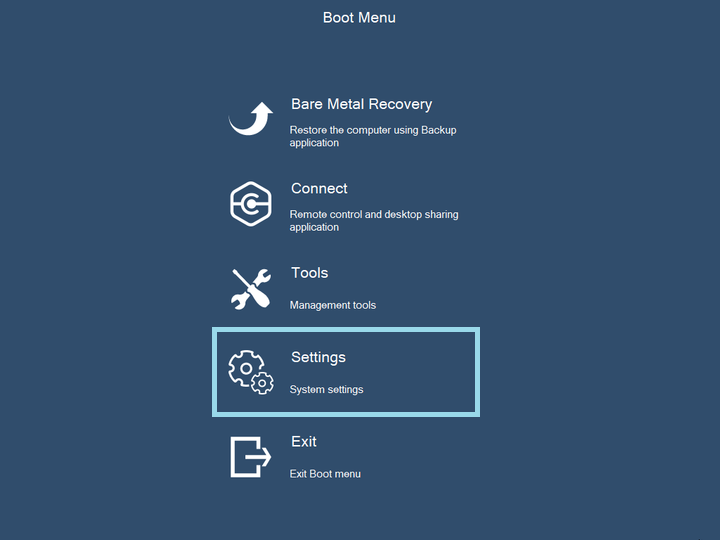
- Click on Network
- Configure your local network settings. Apply the updated network settings.
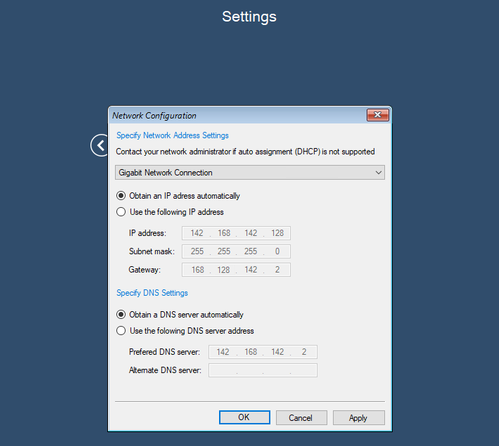
(Optional) Adjust system time on target computer if there is a mismatch more than 5 minutes with the local time:
- Click on Settings

- Click on Date and Time
- Adjust the date and time settings according to the local time zone. You can select the required time zone with Change time zone button. Apply the updated date and time settings.
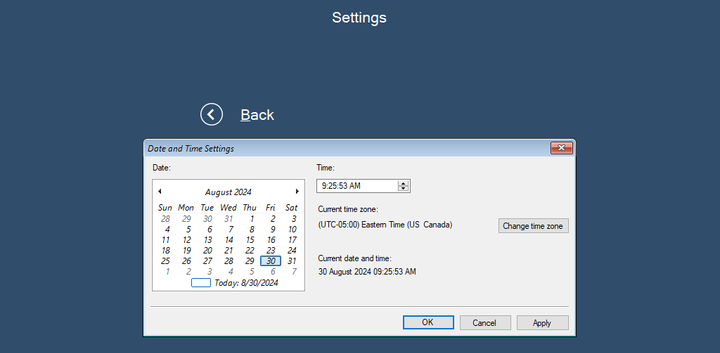
Click Bare Metal Recovery in the main boot menu.
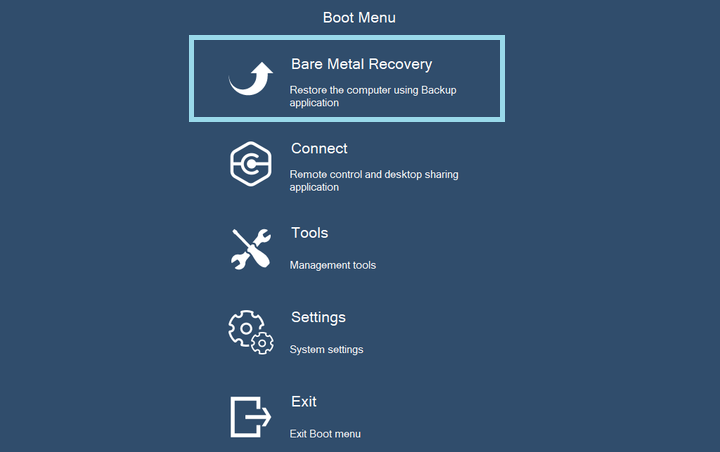
This will install and start the Online Backup service and you will be prompted to log in. You should use the credentials of the user that was assigned for the computer you try to restore.
Once the Backup Agent is started, proceed with the recovery process as described below.
Create and Run the Restore Plan
- Insert the bootable USB drive or mount the ISO image as a drive into the target computer and restart it.
In case you fail with STOP 0x7B INACCESSIBLE_BOOT_DEVICE error, refer to the Add Boot Critical Drivers to a Restored Image KB article to resolve the issue.
- You will see a welcome screen of the "Boot Menu" where you will be prompted to enter the Master Password that you specified when creating the bootable device (if you did not specify any password, this step will be skipped).

(Optional) Provide the network configuration in case of the target computer is on a local network:
- Click on Settings

- Click on Network
- Configure your local network settings. Apply the updated network settings.

(Optional) Adjust system time on target computer if there is a mismatch more than 5 minutes with the local time:
- Click on Settings

- Click on Date and Time
- Adjust the date and time settings according to the local time zone. You can select required time zone with Change time zone button. Apply the updated date and time settings.

Click Bare Metal Recovery in the main boot menu.

This will install and start the Backup service and you will be prompted to log in. You should use the credentials of the user that was authorized for the computer you try to restore.
Once you are logged in, select your backup storage account. Click Next.
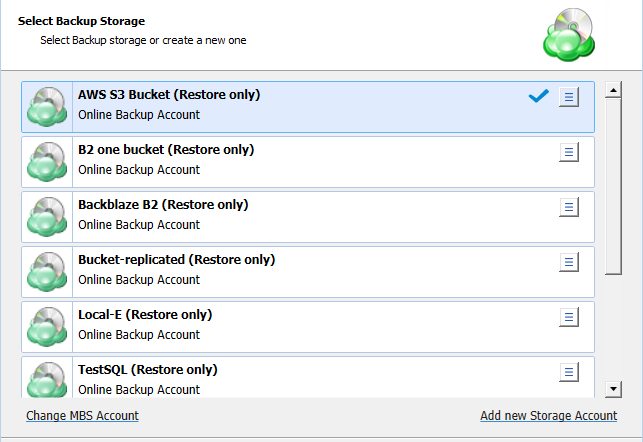
- Select the computer whose backup you want to restore. Click Next.
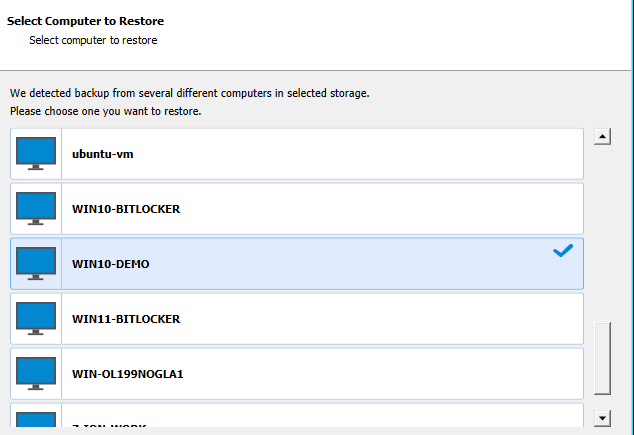
- Select the backup plan to restore.

- Select the restore point.
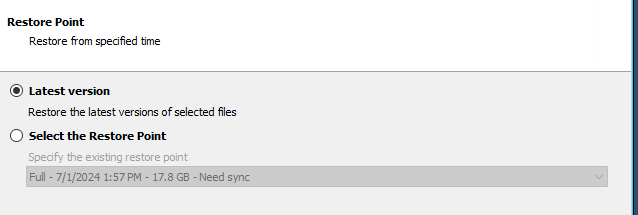
- If prompted, confirm archive content retrieval.
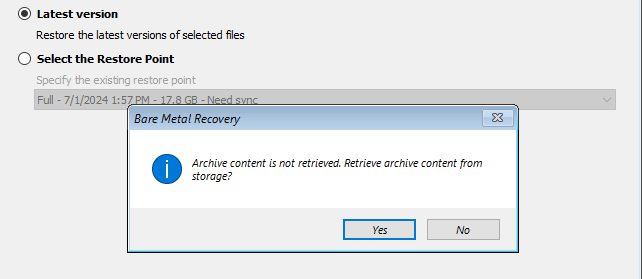
- Provide your encryption password to decrypt encrypted content.
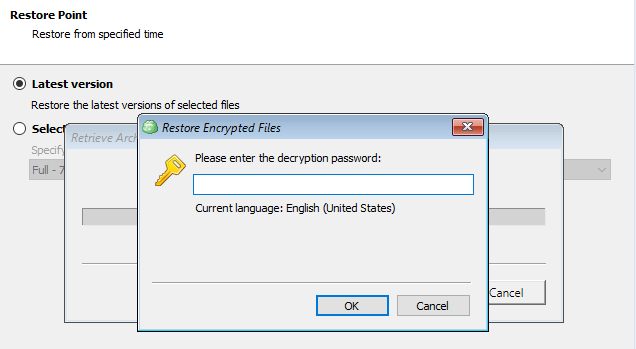
- Select the required partitions.
- To exclude some files and folders from restore, click the partition size value in the Used column, then make an object selection to exclude from a restore.
- To specify a custom partition size, click the value in the Target size column. Click Next.
Selected partitions must include system volumes, as they contain data required to boot the operating system
Attempting to restore to smaller partitions may only succeed if no blocks in the backup image are used beyond the size of the new partition. If such blocks exist, the restore plan will fail with a 'block intersection exists' error. If restoring to a smaller partition is inevitable, make the partition as large as possible

- Select the physical disk as a destination for the restore.
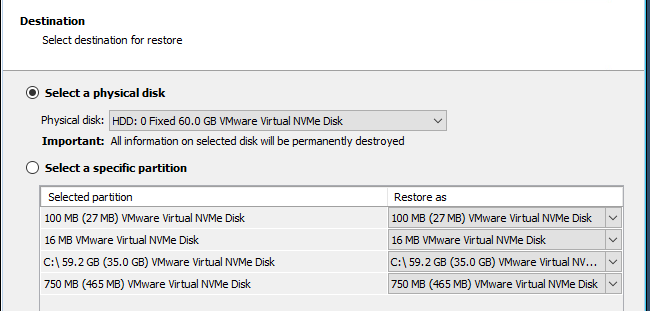
- If prompted, provide your encryption password to decrypt encrypted content.

- Finish the restore wizard to run the restore plan. For troubleshooting purposes use the Send Logs link.

- Once the restore plan completes, restart the computer.
Use Management Tools to Save Logs, Use Command Prompt or Modify Registry (Optional)
You may want to take advantage of the management tools to perform some specific actions (for example, download logs or modify a registry. Find the management tools by clicking System Tools. You can access the target computer from the Management Console using Connect.

The Tools section contains the following options:
- Command Prompt
- Registry Editor
- Save Logs. Consider, the logs should be saved under the current restore session, if you exit the boot menu, the logs will be overwritten
- Backup. This option starts the MSP360 Backup application.
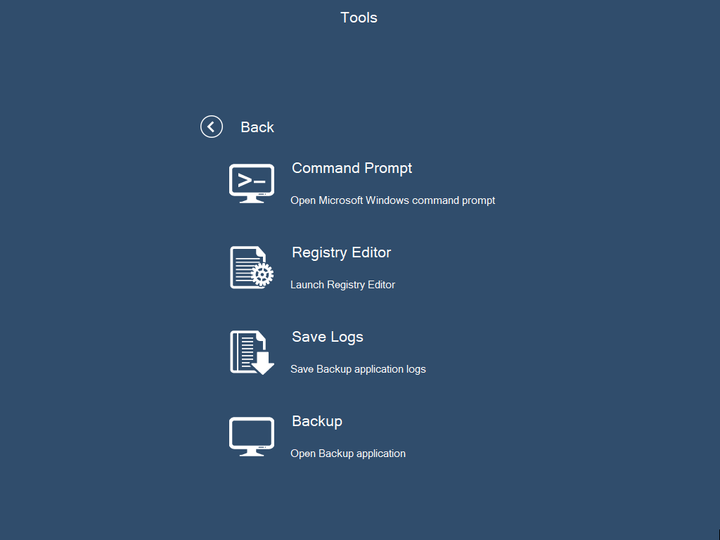
Troubleshooting
Problem:
The boot disk cannot discover the network.
Possible solution (our favorite one):
Ensure that the network cable connecting the computer to the network is functioning.Upon booting from a recovery disk, you can check the network access by running the IPConfig tool in the Command Prompt that is available in the Tools category of the MSP360 (CloudBerry) Boot Menu (see the MSP360 (CloudBerry) Boot Menu section of this document for more information).

Problem:
The recovery process fails.
Description:
Upon loading, the recovery disk creates a virtual drive in the PC memory (this drive is assigned the letter X by default). This virtual disk is used to contain a repository storing the image-related data. Every time you boot from the restore disk, this repository is created from scratch.
The virtual disk size varies depending on the operating system family. When you are required to store an increased amount of image-related information, the repository might exceed the virtual disk size, which results in an error and the failure of the recovery process.
Possible solution:
To avoid this issue, create a new recovery disk using the command-line interface (CLI) and increase the repository size by running the "createRecovery" command with the "-ss (-scratch-space)" parameter. You can use this parameter to increase the repository size to 256 or 512 MB.
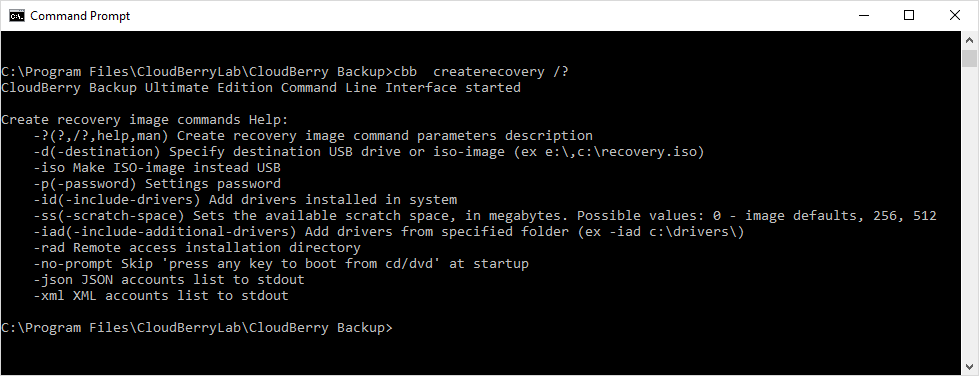
See the Create bootable USB drive (createrecovery) to learn more about using the CLI for recovery tool creation.
Problem:
When restoring a disk image from Amazon S3, the following error occurs: "The clock is not synchronized."
Solution:
On the MSP360 (CloudBerry) Boot Menu, switch to Tools and press T to synchronize the local and network clocks.
Problem:
The disk image is not found.
Possible solution:
Try changing the backup prefix to make it match the name of a computer on which the disk image was created.
Problem:
When trying to log in to the MSP360 (CloudBerry) agent, the following error occurs: "The remote name could not be resolved: 'mspbackups.com'".
Possible solution:
This error may occur if the IP address configuration is missing, for example when the machine is located in a network without a DHCP server.
Problem:
On an attempt to restore a disk image using a recovery USB drive, the following error occurs: "A connection to the deployment share could not be made. The following networking device did not have a driver installed."
Possible solution:
The reason for this error may be a missing network device driver or some failure during the import of drivers. See the following Knowledge Base article for more information: Missing Driver On WinPE While Trying To Restore With Bootable USB.